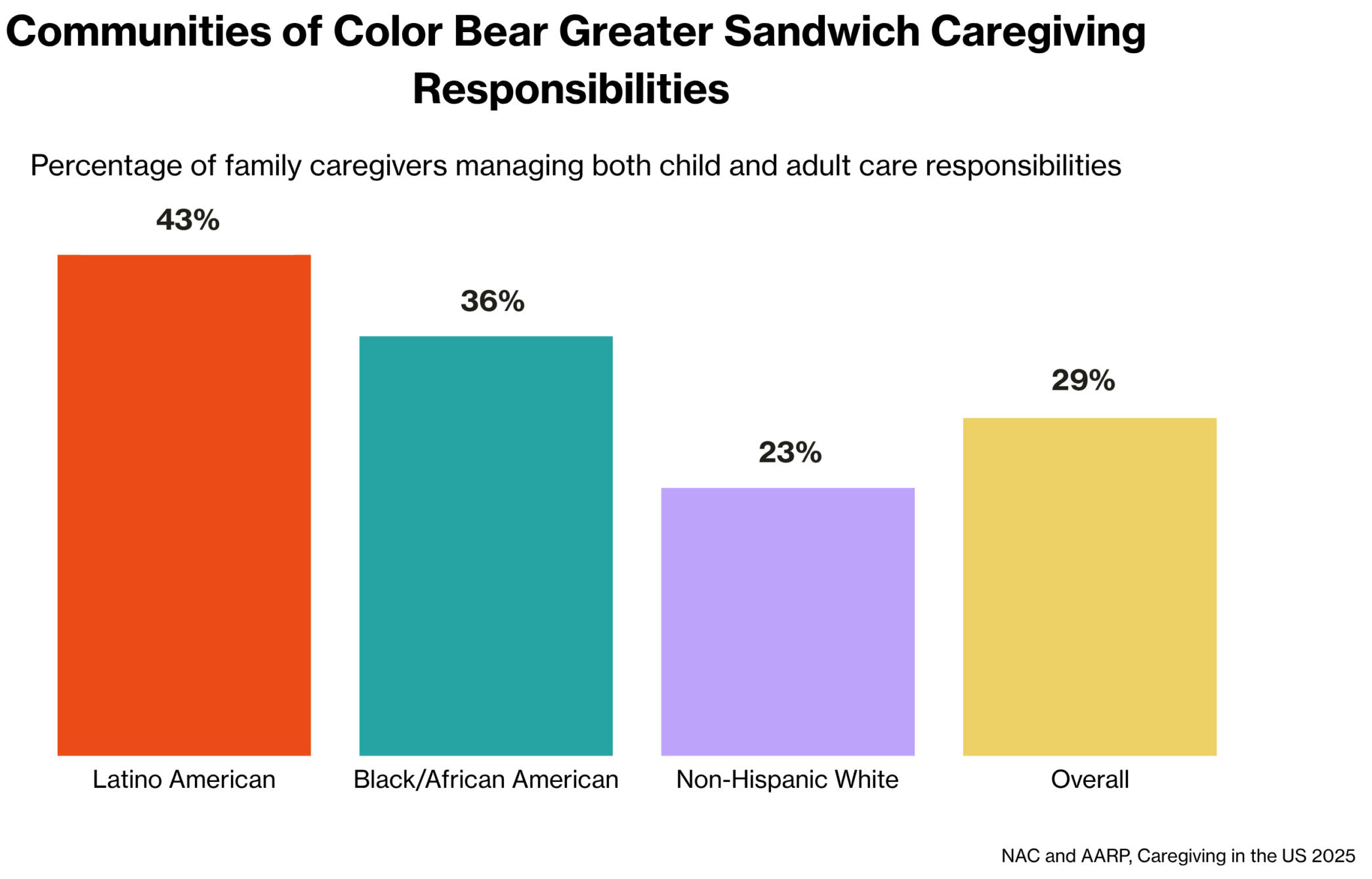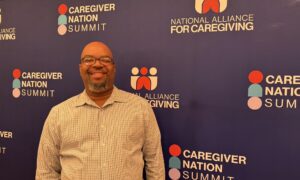Beyond Silos: Why America's 130 Million Caregivers Need Connected Solutions

Key Takeaways
-
Sixteen million Americans are sandwich caregivers, simultaneously caring for both children and adults.
-
Among family caregivers under 50, nearly half (47%) fall into this category, compared to just 14% of older caregivers.
-
The data reveals interconnected care that defies our segmented and siloed policy infrastructure.
America faces an unprecedented caregiving reality. According to Caregiving in the US 2025 research, 63 million adults provide care for other adults with disabilities or serious medical conditions—a 46% increase since 2015. Combined with the 91 million Americans caring for children, approximately 130 million people are engaged in caregiving. This is the floor, not the ceiling. Yet we continue to treat child care and care for sick, aging, and disabled people as separate policy challenges, ignoring the integrated reality of family life. It is time for a new, comprehensive research and policy agenda.
The Living Room Doesn’t Have Policy Silos
The data reveals interconnected care that defies our segmented policy approach. Sixteen million Americans are “sandwich generation” caregivers, simultaneously caring for both children and adults. Among family caregivers under 50, nearly half (47%) fall into this category, compared to just 14% of older caregivers.
These statistics represent real people—a mother rushing from her daughter’s asthma attack at school to her father’s chemotherapy appointment, juggling insurance paperwork for both while struggling to keep her job. This reality hits communities of color particularly hard, with 36% of Black and 43% of Hispanic/Latino caregivers managing sandwich generation responsibilities compared to 23% of non-Hispanic white family caregivers.

These pressures will intensify. By 2040, one in four Americans will be over 65. By 2050, we’ll have as many people over 85 as under 5. This isn’t just population aging—it’s a fundamental restructuring of American family life demanding integrated solutions. Not unlike climate change, this demographic shift is happening gradually but steadily, and it will be far easier to act now than when we’re in the midst of the most challenging impacts.
Meanwhile, our policy infrastructure remains stubbornly siloed. Child care and aging care occupy different funding streams, fall under different Congressional committees, and mobilize separate advocacy ecosystems. While policymakers debate in silos, families experience caregiving as a continuum—piling needless stress onto already overwhelmed households.
The Invisible Infrastructure
Caregiving forms what researchers call “the invisible backbone of American communities.” This (often unpaid and unappreciated) infrastructure already operates as an integrated system, even if our policies pretend otherwise.
Families don't face discrete "child care challenges" and "aging care challenges"—they face Tuesday afternoon, when the school nurse calls about a sick child just as dad's medical transport arrives.
This invisibility contributes to our policy blindness. We’ve normalized parenting as expected caregiving while treating aging care as something to avoid or outsource. This artificial distinction ignores how care needs flow naturally in both directions across generations.
Building Solutions That Match Reality
Creating effective policies requires systemic thinking, including in areas not traditionally coded as “family policy.” These include:
- Workplace reforms must include paid family and medical leave, flexible dependent care leave (not just sick days), predictable scheduling, and cultures that support all forms of caregiving—not just parenting. Workers are navigating caregiving more and more.
- Community infrastructure needs reimagining through intergenerational care facilities, updated zoning policies, and co-located services that recognize families’ time and transportation constraints. Examples of this can be seen in the UK and Seattle.
- Economic supports should recognize all caregiving work equally through tax credits and Social Security caregiving credits.
- Housing policy must prioritize multigenerational homes and aging-in-place accessibility as standard features, not luxuries.
How do we begin to operationalize this shift?
The Path Forward: From Silos to Systems
Population aging isn’t another policy issue—it’s an era that will reshape every aspect of society. We can develop integrated solutions now or lurch from crisis to crisis as systems designed for a younger America buckle under demographic pressure.
Transformation begins with how we study and advocate for care. Research silos create policy silos. Child care and aging researchers rarely interact, despite studying the same families at different life stages. Those 16 million sandwich generation caregivers represent natural connection points for unified policy, yet we rarely study their integrated experiences.
We need research asking harder questions: How do families make trade-offs when competing care needs arise? What interventions create benefits across the caregiving spectrum? How do we build communities supporting caregiving as a system, not fragments?
The opportunity is massive. Those 130 million caregivers represent an enormous constituency for change—if they recognize their common cause. This requires coordinated action:
- Policymakers must design with the full caregiving spectrum in mind.
- Advocates should build coalitions across child, disability, and aging care communities—their constituents are often the same people at different moments. Progress is emerging through initiatives like Care Can’t Wait and Caregiver Nation Coalition.
- Funders must shift from categorical giving to ecosystem thinking, investing in initiatives bridging care sectors. The CARE Fund exemplifies this possibility.
- Researchers should study intersections, learning from those already navigating multiple responsibilities.
- Families can find power in recognizing they’re part of a 130-million-strong movement.
When we support caregiving comprehensively, we strengthen the invisible backbone holding communities together across generations. The choice is clear: continue pretending care happens in silos or build systems reflecting the integrated reality millions already navigate daily. With demographic change accelerating and family structures evolving, the time for artificial divisions has passed. Our future depends on recognizing care as the continuous, interconnected, and essential work it has always been.
Elliot Haspel is a Senior Fellow at Capita and author of Raising a Nation. Jason Resendez is the President and CEO of the National Alliance for Caregiving.


